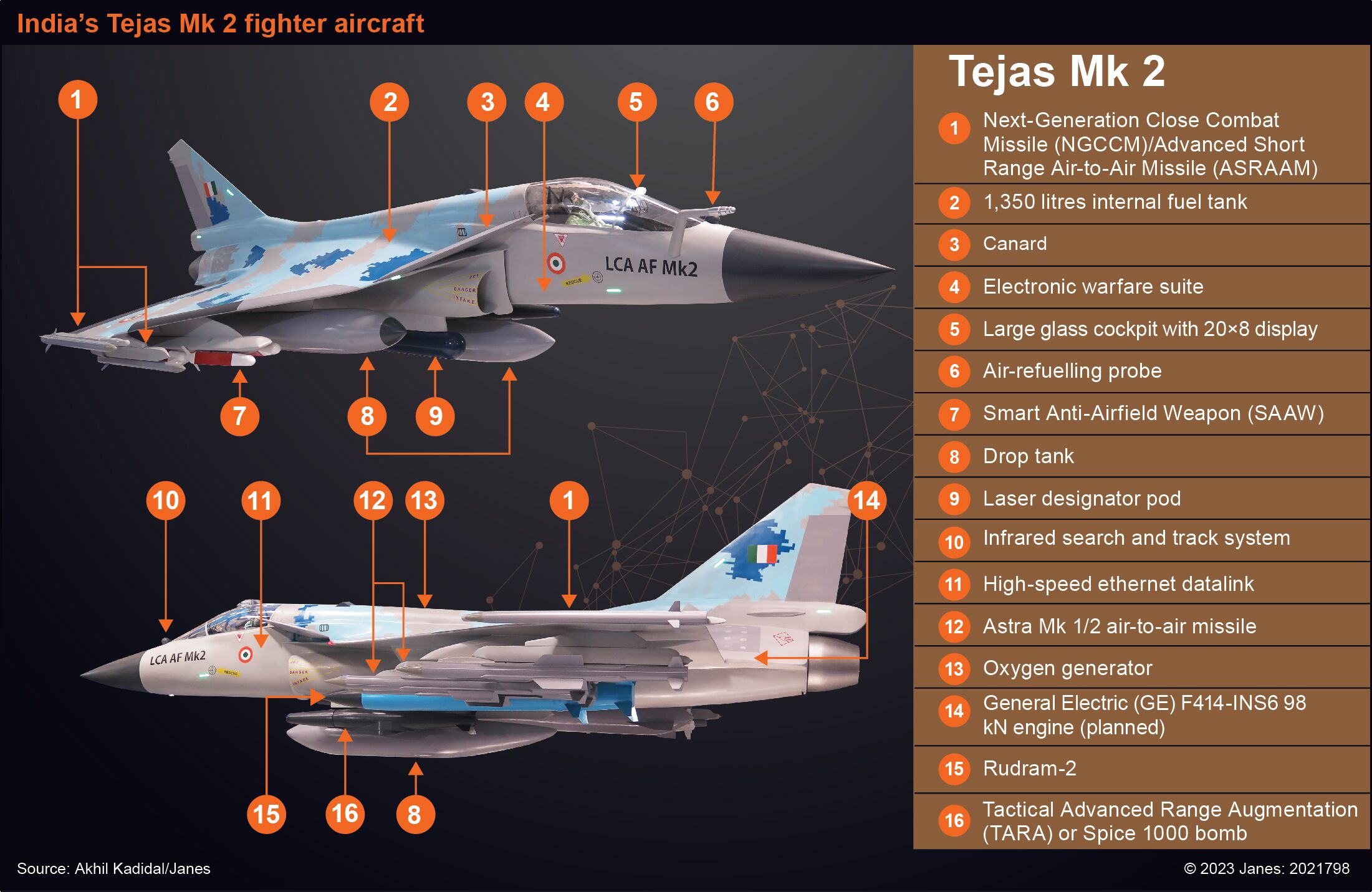- About
- Intara
- Capabilities
- Advisory
- Resources
- News
- Store
12 May 2023
Parting shot: Tejas Mk 2
by Akhil Kadidal


India's Tejas Mk 2 fighter aircraft. (Janes/Akhil Kadidal)
India's Tejas Mark 2 project is intended to provide the Indian Air Force (IAF) with a more advanced version of the Tejas Mark 1 light combat aircraft (LCA). The aircraft's key role is to give the IAF the ability to wield a wide range of stand-off weapons.
The IAF previously told Janes that it requires about 180 aircraft. Janes understands this is on the condition that the aircraft has better capabilities than the baseline Tejas Mk 1. The IAF mandate is clear – improved radars and avionics, a better engine, greater range, and a greater fuel- and weapons-carrying capacity.
These demands have prompted the Aeronautical Development Agency (ADA) of India's Defence Research and Development Organisation (DRDO) to design an aircraft with 4.5 generation technologies. Janes understands that Mk 2 is built around the core technologies of the Mk 1.
“The intention is to iron out all the shortcomings found in the Mk 1 or Mk 1A,” a source involved in the process told Janes .
Janes understands about 15,000 schematics and blueprints comprise the totality of the design. Within these are design features intended to give the Mk 2 key advantages over some international combat aircraft.
These include the aircraft's ability to integrate 42 air-launched weapons, with commonality in pylons. According to data previously released by the ADA, which oversees the development of the LCA Tejas, the baseline Mk 1 and 1A have a payload-carrying capacity of 3,500 kg. The Mk 2 has been designed for a payload capacity of 6,500 kg, according to Janes data.
Already a Janes subscriber? Read the full article via the
Client Login
Interested in subscribing, see What we do
India's Tejas Mark 2 project is intended to provide the Indian Air Force (IAF) with a more advanced ...
 Details
Details